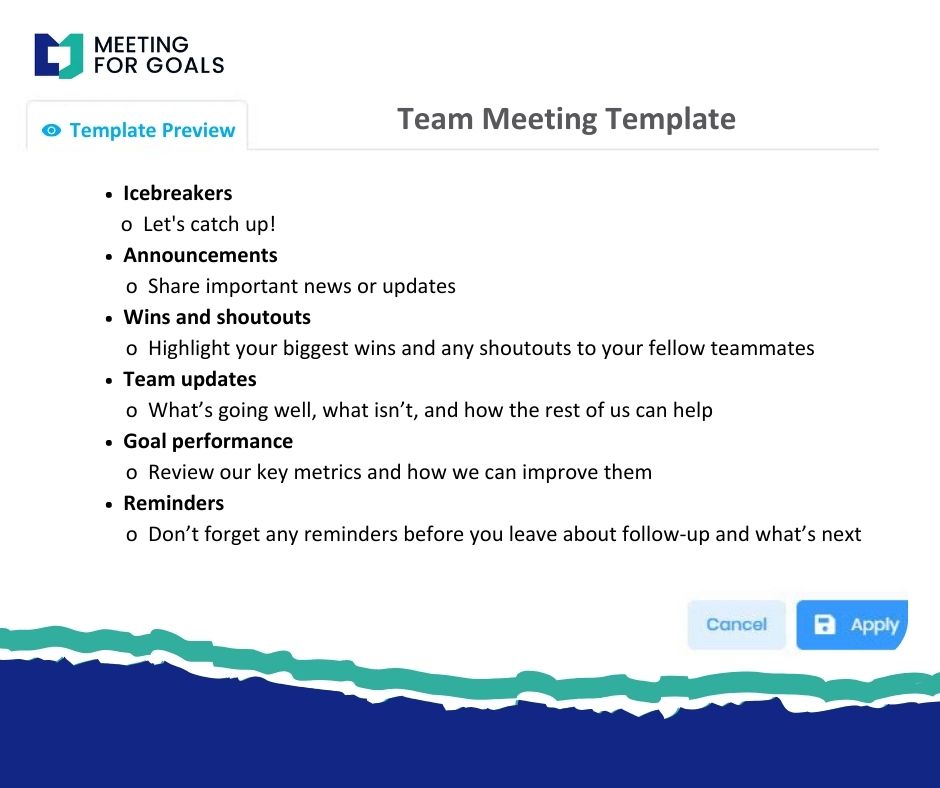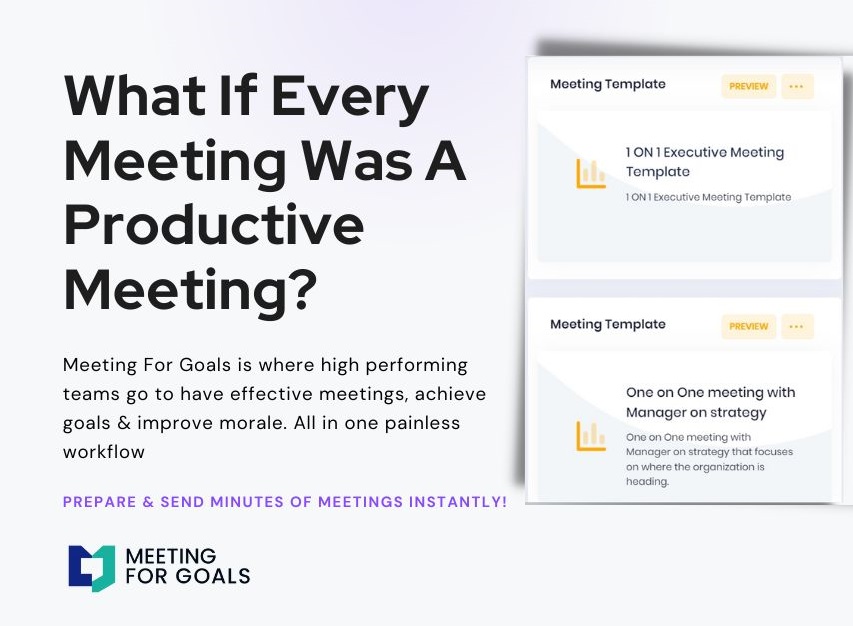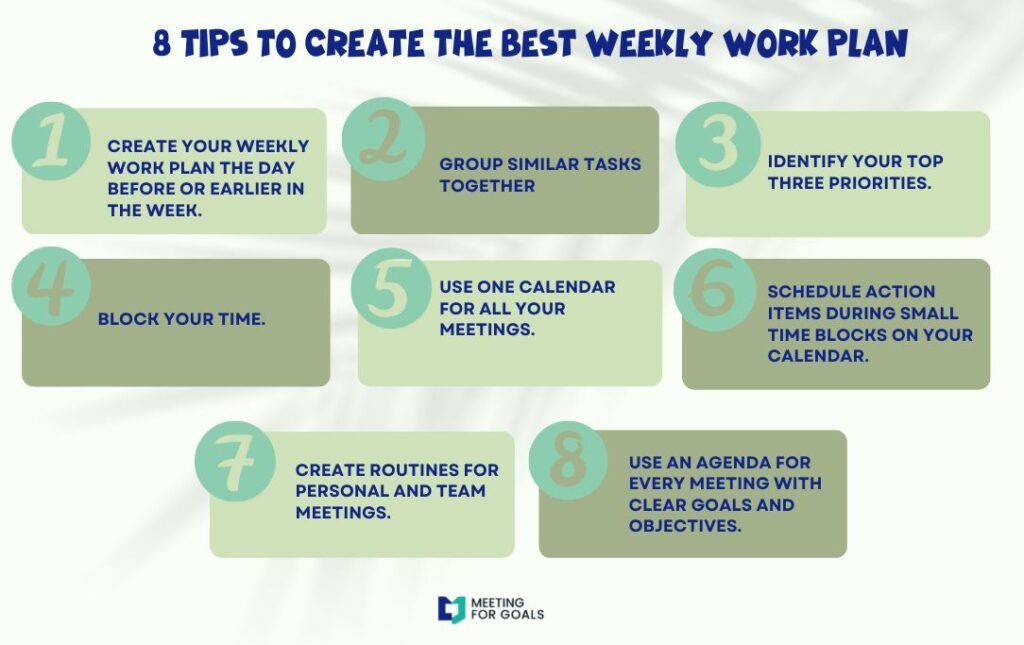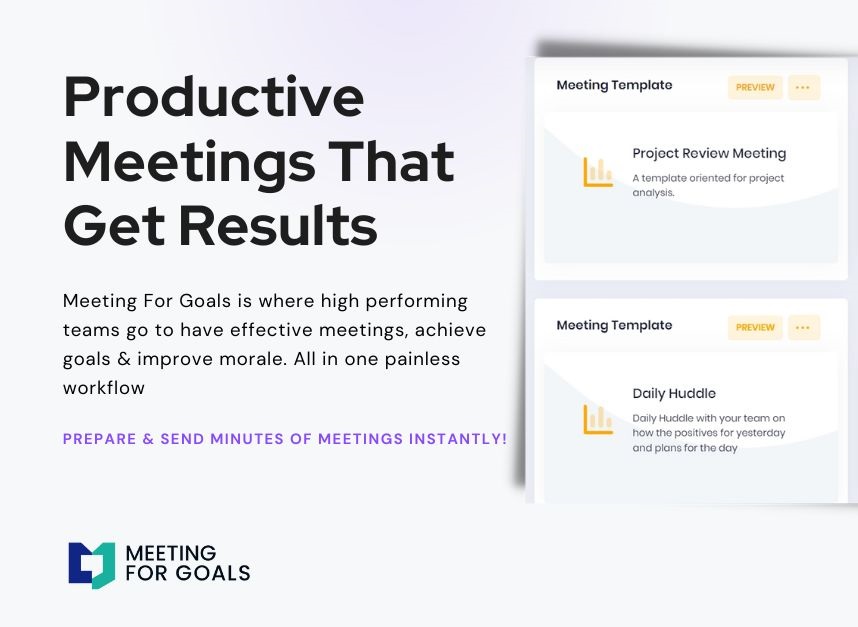Features of Management: How Meeting For Goals Empowers Teams to Succeed
In today’s fast-paced business world, effective management is the foundation of a productive and high-performing team. For organizations with **40 to 70 employees**—especially those led by ambitious executives—streamlining meetings and optimizing team performance isn’t just a nice-to-have. It’s essential.
At Meeting For Goals, we believe that mastering the core features of management—**clear communication, goal alignment, accountability, time management**, and **continuous improvement**—can transform your team’s productivity. And with the right tools, implementing these principles becomes seamless.
If you’re a **Director, VP**, or **C-suite executive** looking to elevate your team’s performance, this guide is your roadmap to success. Whether you’re just getting started or refining your leadership strategy, this article will help you turn meetings into powerful productivity engines.
Explore our free meeting templates to get started with structured and effective meetings today: https://meetingforgoals.com/meeting_templates
I. Introduction
Management isn’t just about overseeing tasks. It’s about creating a focused, goal-oriented environment where teams thrive. In companies with 40 to 70 employees, there’s little room for inefficiency. Every meeting, decision, and task must contribute to the bigger picture.
That’s where Meeting For Goals comes in. Our platform is designed for high-performing teams that want to make every meeting count. We help transform meetings from time-wasters into strategic tools that drive **alignment, accountability**, and **results**.
In this post, we’ll break down the six essential features of effective management. We will show how Meeting For Goals helps you apply them in your daily workflow. From shortening meeting times to improving clarity and boosting team accountability, we’ve got you covered.
Ready to lead with impact? Let’s dive in.
2 Minute Video
Watch a 2 minute demo of our meeting management software in action.
II. Clear Communication
Clear communication is the foundation of great management. When everyone understands what needs to be done—and why—it builds trust, reduces confusion, and keeps projects moving forward.
In mid-sized organizations, even small communication breakdowns can lead to big problems. These can include:
- Missed deadlines
- Duplicated work
- Frustration stemming from unclear expectations
Good communication isn’t just about speaking clearly. It’s about:
- Listening actively
- Being transparent
- Ensuring everyone is on the same page
Managers need to explain not just the “what,” but also the “why” behind decisions and tasks.
Structured meetings are a powerful way to improve communication. With the right tools, you can ensure that every meeting has a clear purpose, stays on track, and ends with actionable takeaways.
Meeting For Goals makes this easy. Our platform includes:
- Customizable agendas
- Collaborative note-taking
- Real-time action item tracking
Everyone knows what’s happening before, during, and after the meeting. After meetings, automated summaries and follow-ups ensure that nothing gets lost. This clarity helps teams move faster and with more confidence.
Want to see how this works in action? Sign up today and experience the difference: https://app.meetingforgoals.com/TenantRegistration/Register
Adding an Agenda
How to add an agenda instantly on Meeting For Goals.
III. Goal Alignment
When everyone is working toward the same goals, amazing things happen. **Goal alignment** ensures that each team member’s work contributes directly to the company’s mission.
Without alignment, teams can drift apart. Each may focus on their own objectives, which may not support the bigger picture. This leads to:
- Wasted resources
- Confusion
- Missed opportunities
On the other hand, aligned teams are more:
- Engaged
- Motivated
- Productive
They know how their efforts fit into the broader strategy and are more committed to achieving results.
One effective way to set aligned goals is through the **SMART framework**: Specific, Measurable, Achievable, Relevant, and Time-bound. SMART goals provide clarity and make it easier to track progress.
But setting goals isn’t enough. You need to revisit them regularly to ensure they’re still relevant. This is where meetings come in.
Meeting For Goals helps teams tie agendas directly to company goals. You can track progress, revisit objectives, and adjust strategies—all from one place. This keeps your team focused on what truly matters.
As Harvard Business Review points out, goal alignment is critical for organizational success. When employees understand how their work supports strategic goals, companies see:
- Better performance
- Stronger engagement
Use Meeting For Goals to keep your meetings—and your team—aligned with your vision.
IV. Accountability and Responsibility
Accountability is what turns plans into results. When team members take ownership of their roles, they’re more likely to follow through on commitments and deliver quality work.
In mid-sized teams, every person’s contribution matters. Without accountability, tasks can fall through the cracks. A delay from one person can affect the whole team.
But accountability doesn’t mean micromanaging. It means making responsibilities clear and creating a culture where follow-through is expected and supported.
Meetings are a great way to reinforce accountability—if they’re structured correctly. Key practices include:
- Assigning tasks
- Setting deadlines
- Following up on action items
Unfortunately, many teams struggle with follow-through because they lack the right tools.
Meeting For Goals changes that. During meetings, you can:
- Assign tasks in real-time, complete with owners and deadlines.
After the meeting, the platform sends automatic reminders and tracks progress. This keeps everyone on the same page and reduces the need for constant check-ins.
A study by Gallup found that teams with high accountability are **21% more productive**. Source
With Meeting For Goals, you’re not just assigning tasks—you’re creating a culture of ownership and results.
V. Time Management
Time is one of your most valuable resources. Yet, many teams waste hours in meetings that run long, go off-topic, or don’t lead to action.
For mid-sized companies, poor time management can have a big impact. It can:
- Slow down decision-making
- Drain morale
- Reduce productivity
Efficient meetings start with planning. A clear agenda, time-boxed discussions, and defined outcomes help keep things on track. Leaders also need to be mindful of who really needs to be in the room.
Meeting For Goals is built with **time management** in mind. You can create agendas with time limits for each topic, so discussions stay focused. Share agendas in advance to encourage preparation.
During the meeting, built-in timers and progress indicators help keep everything running smoothly. Afterward, concise summaries and action items reduce the need for extra follow-ups.
This means **fewer meetings**—and more time for strategic work.
Want to save even more time? Check out our free meeting templates: https://meetingforgoals.com/meeting_templates
VI. Continuous Improvement
Great teams don’t settle—they improve constantly. **Continuous improvement** means regularly evaluating your processes, learning from experience, and making changes that lead to better outcomes.
This is especially important for meetings. Without intentional effort, meetings can become repetitive and unproductive.
Improvement starts with feedback. Leaders should encourage team members to share what’s working and what’s not. Honest feedback helps you refine your approach and avoid repeating mistakes.
Meeting For Goals includes built-in feedback tools. After each meeting, participants can:
- Rate the session
- Suggest improvements
- Highlight any issues
These insights are compiled into easy-to-read reports. You also get access to key performance metrics—like attendance, task completion rates, and goal progress. This data helps you understand how meetings are impacting performance and where improvements are needed.
By analyzing these metrics, you can make data-driven decisions about how to run better meetings.
This approach supports a growth mindset. It helps your team stay agile, innovative, and aligned with your goals.
To stay competitive, your team must keep improving. Meeting For Goals helps you build that culture from the ground up.
VII. Conclusion
Effective management isn’t about doing everything perfectly from day one. It’s about building systems that support:
- Clarity
- Alignment
- Accountability
- Time efficiency
- Continuous improvement
For companies with 40 to 70 employees, mastering these features can be the difference between a high-performing team and one that struggles to meet its goals.
Meeting For Goals is more than just a meeting tool. It’s a complete management solution that helps you implement these principles in your daily workflow. From setting agendas and assigning tasks to tracking progress and collecting feedback, we make it easy to run smarter, more productive meetings.
If you’re a **Director, VP**, or **C-suite executive** ready to level up your team, it’s time to rethink how you manage meetings.
Start by implementing these six key features of management—and let Meeting For Goals be your partner in success.
Explore our platform, try our free meeting templates, and see the difference structured, goal-oriented meetings can make.
👉 Ready to get started? Sign up now: https://app.meetingforgoals.com/TenantRegistration/Register
👉 Want to learn more? Visit us at https://meetingforgoals.com
Let’s make every meeting count.




